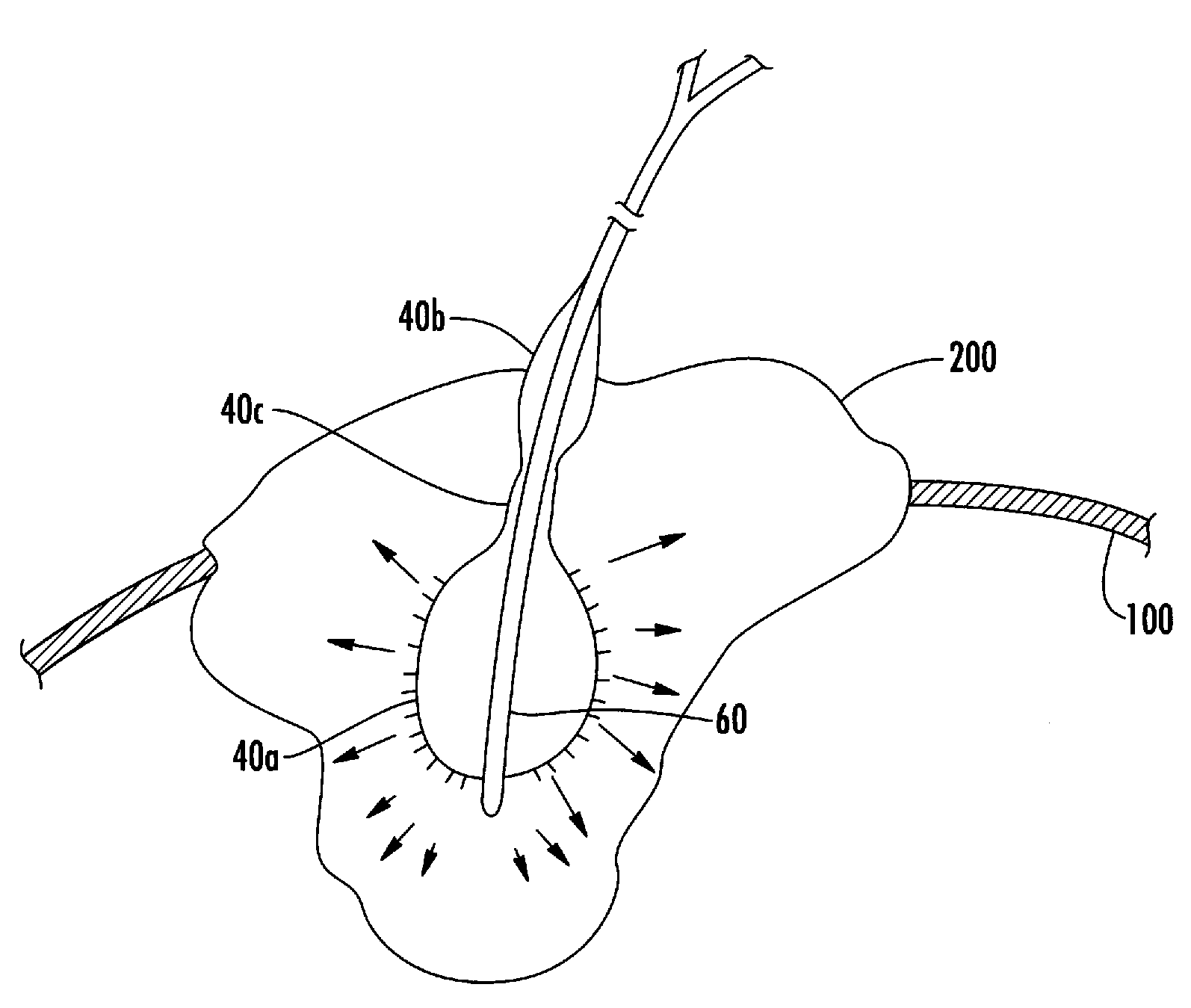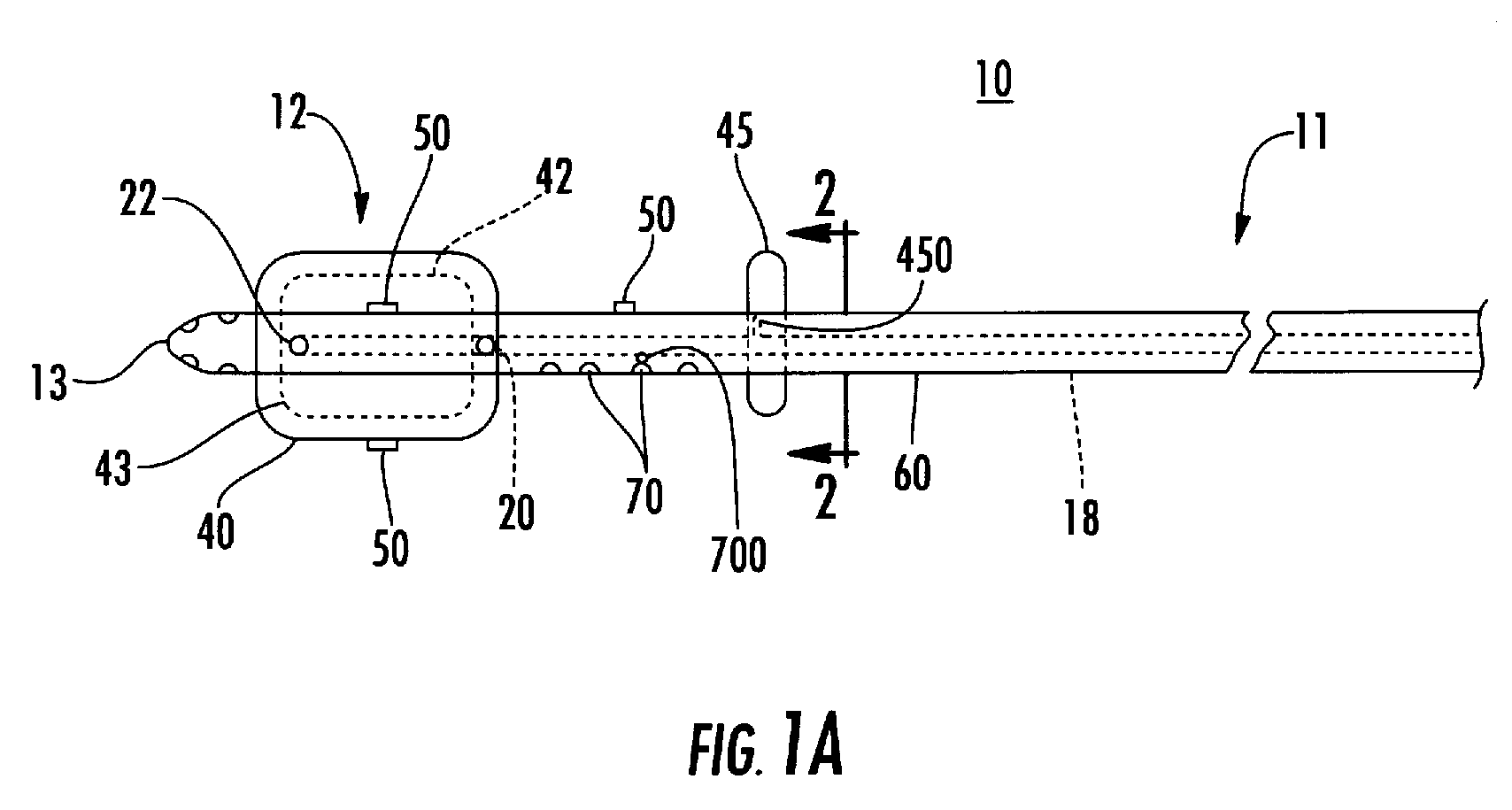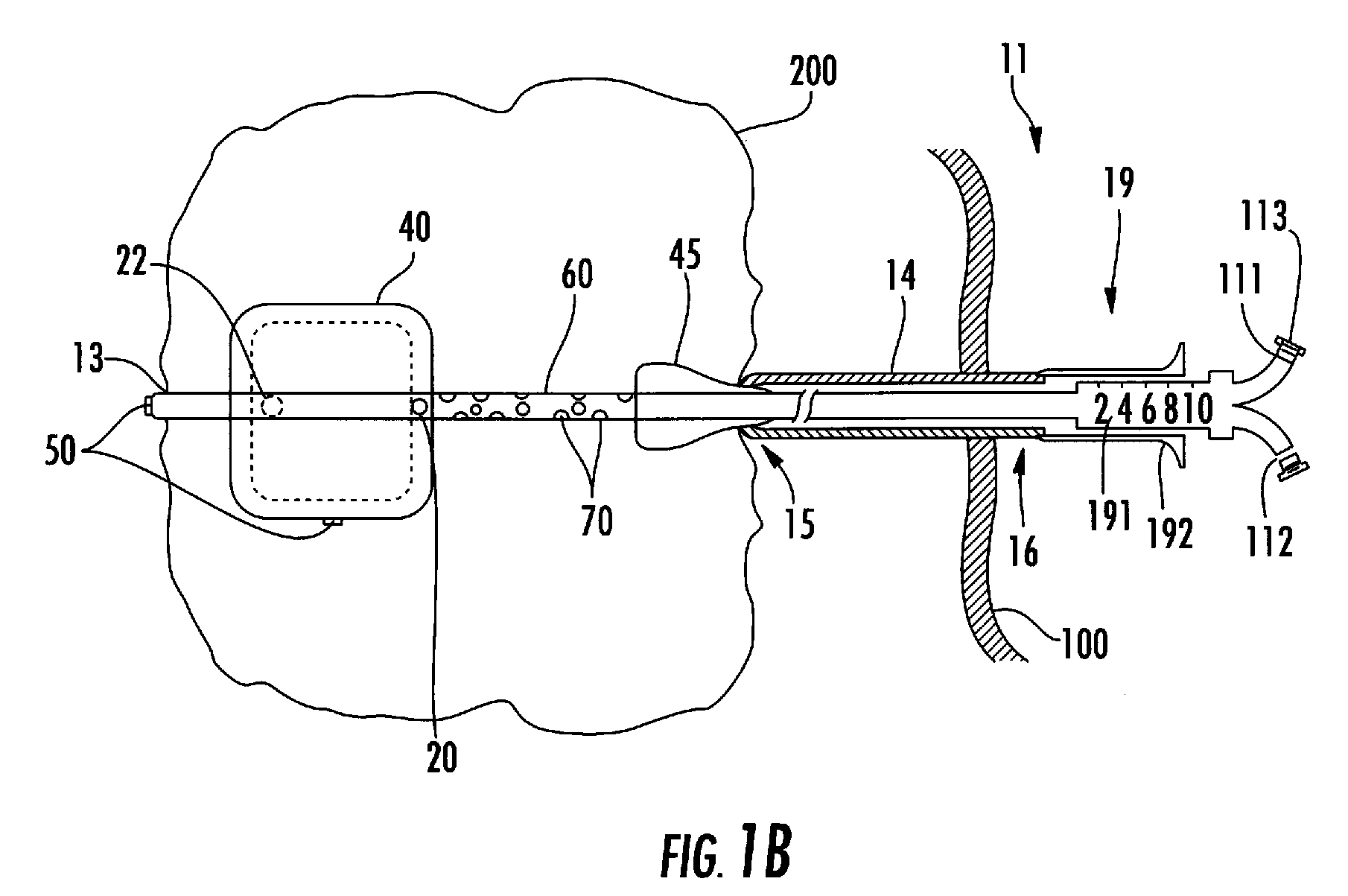Moreover if the injected cytotoxic agent(s) is a
radiosensitizer, the deleterious effect can be synergistic with radiotherapy.
The delivery strategy of administering
cytotoxic drug(s) directly into a tumor is a major issue limiting its widespread use.
Unfortunately, physicochemical and physiological barriers can lead to heterogeneous accumulation of various therapeutic molecules, particles, and / or cells in
solid tumors.
Consequently fluid flow and transport of macromolecules by
convection is poor in a tumor's center and wash out of agents is increased at the
tumor margin, where pro-angiogenic activity is usually high.
Moreover, the injection technique is very operator dependant in that it relies on perceived tumor margins and
mass, subjective assessment of the number of sites of puncture to cover the entire visible
mass, and subjective assessment of the fluid-
dose fraction of
active agent to inject at each site.
Most often, the needle is pointed and with a single orifice, which doesn't allow for a controlled distribution of agent, being a fluid or a particle within the interstitial medium of the target.
Similarly, complete
dose administration isn't sure since
backflow cannot be prevented, and is often quite difficult to assess, and intravascular administration isn't easy to detect.
Moreover, multiplying the sites of injection increases chances of injury to risky tumoral structures, as well as
operative time.
Such conditions can lessen procedure tolerance by the patient with a risk of lesser
patient compliance to repeated procedure.
This approach, however, is both time-consuming and difficult to employ in the clinical setting particularly because multiple overlapping treatments must be performed in a contiguous fashion (in all 3D) to distribute agent to the entire
lesion.
Simultaneous use of multiple needles can reduce the duration of application but can be technically challenging in narrow passages or during endoscopic use.
Such features are dependant for their
efficacy on the conditions of
fluid transport existing in the target at the time of injection, and due to the extreme variability of these conditions, the distribution and deposition of
active agent(s) at the right place cannot be predicted.
Another issue with injecting fluid into tissue while preventing
backflow with specific features, as described in U.S. Pat. No. 6,203,526 to McBeth, is that there is a need for a sufficient pressure to allow the flow of fluid out of the delivery openings of the instrument.
Such pressure increases the risk of metastases by pushing migrating cells within the tumor
vascular network, “mosaic vessels”, through which it is estimated that 1
million cells travel per day and per
gram of tumor.
The same issue arises with any delivery device that injects fluids or compositions into tumors.
In a
disease such as
cancer, failure to treat a small fraction of cells can result in tumor regrowth.
So far, they have met only limited success.
For instance during trans-bronchial needle injection of
lung cancers in end-stage patients with
refractory disease there is a risk of
spillage of the injectable agent into the surrounding airways and
lung, the consequences of which depend mostly on the amount and
toxicity of the agent being injected.
However there is no control over the distribution of the composition into the target, which is delivered into the central area, and no tissue
distension-compression to minimize
washout, minimize target volume and increase retention of composition.
However, after delivery of fluid-based drug(s) etc. . . . the transport of substances is determined by tumor characteristics that contribute to
convection and
diffusion, out of any instrumental control.
Such a device would increase the risk of bleeding and flushing of
tumor cells resulting in migration and causing the tumor to possibly metastasize.
Generally speaking the use of single or multiple needle or microneedle injection systems are aggressive and risky for tumor structures drainage systems and since they build pressure during injection they increase the risk of spilling
tumor cells through this fragile and leaking
vascular network.
However the '356 patent doesn't teach a device that would prevent backflow of fluid or how to configure a device for treating large
tissue volume.
The use of anti-backflow systems alone during intratissue injection increases the risk of spilling migrating
tumor cells and doesn't allow for directed flow of injected substances or for decreasing volume of
tumor target to be injected.
Moreover this method has the potential to make old and / or new, and or generic free drugs or compositions thereof very useful for the local, less expensive, treatment of
cancer since the transport of drug(s) through a distended-compressed tumor, made denser, and momentarily deprived of vascular drainage in the vicinity of the
delivery system is expected to be slower.
In
spite of the promise associated with most techniques of direct
interstitial fluid-based therapies like chemoablation (indicated for such malignant tumors as
lung,
prostate, breast,
head and neck, brain, and liver) and the potential clinical applications of these techniques, progress has been hampered by the lack of an effective means to achieve the overall objective of efficient and reliable therapeutic agent delivery using conventional techniques and devices.
One of the most significant shortcomings of current systems is the inability to achieve reliable and consistent application from subject to subject.
Other sources of variability that are not addressed by current systems include differences in the physiologic characteristics between patients that can affect the application of the procedure.
 Login to View More
Login to View More  Login to View More
Login to View More 


